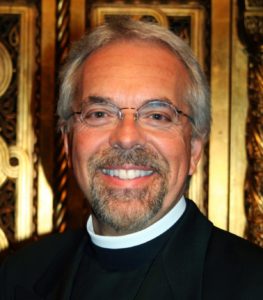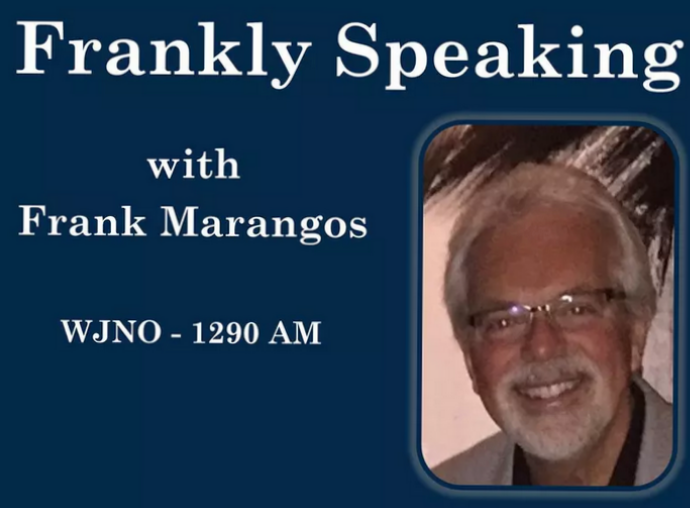
Fr Frank Marangos
Source: OINOS Educational Consulting
By Frank Marangos, D.Min., Ed.D., F.C.E.P
|
This edition of Frankly Speaking will examine how a nonprofit’s communication strategy resembles the components of a crossbow. In the hands of a skilled archer – the arrows of its mission have great potency.
|
“In any situation that calls for you to persuade, convince or manage someone or a group of people to do something, the ability to tell a purposeful story will be your secret sauce.” ~ Peter Guber
November 18, 2021, marked the 714-year celebration of this event. When on that date, in 1307, William Tell, an expert marksman, aimed a crossbow on an apple placed on his son’s head, and split it cleanly in two, winning their freedom. Before his release, however, William Tell confessed to Gessler that he had placed 2 arrows in the crossbow. “In case I missed the apple, and killed my son,” he said, “the next one was for you!”
For that remark, William Tell was arrested, bound, and put on a prison ship. But fate intervened. A storm struck the ship and, in the ensuing chaos, the marksman escaped. He returned back to his homeland and killed Gessler. With that act, William Tell sparked a rebellion that ultimately led to Swiss independence. His crossbow is now Switzerland’s official symbol, displayed on every product they export.
For the purpose of this commentary, I would suggest that nonprofit communication resembles the components of an archer’s crossbow. In many ways, the Crossbow may be understood as a nonprofit itself. Its mission embodies the potency of its power and force. The Archer, on the other hand, is the Nonprofit’s trustees, leadership, staff, and volunteers. It is the organization whose vision and aim must be carefully aligned to the nonprofit’s mission.
The Arrows and Bolts of a Crossbow are the programs, services, and messages that are used to hit a nonprofit’s targets. That is the structures and societal privations that, like the apple placed on the head of William Tell’s son, are, for one reason or another, the structures and causes that imperil their lives and freedoms. Finally, the Crossbow string or resilient cable may be compared to the dynamic tension of love, commitment, and energy provided by a nonprofit’s leaders, donors, and volunteers that strategically propel its programs, services, and message towards their intended bullseye.
William Tell is Switzerland’s national hero. He is revered for his gallant acts leading to Switzerland’s liberation. Over the centuries, his legend has become a universal symbol for a nation’s struggle to remain free. Shooting an apple off someone’s head requires strength, trust, confidence, vision, and skill. The same skills and resources are required for the accurate application of nonprofit archery.
Apart from evoking the love of a father towards his son and a nation’s struggle for freedom, the legend of William Tell may be seen as a paradigm for strategically aligning the Crossbow of a nonprofit’s communication tools with its volunteers, donors, and clients. In so doing, philanthropic institutions can successfully engage their patronage in such a way as to enhance, influence, and transform the condition of each.
According to the National Center for Charitable Statistics, there are 1.5 Million tax-exempt, nonprofit organizations in the United States. These entities contribute more than $1 Trillion to the National Economy, representing 5.6% of our country’s Gross National Product. In addition, 25% of the US population provides nearly 9 billion hours of volunteer service representing $195 Billion in value.
Remarkably, the Association of Fundraising Professionals reports that 41% of nonprofits attribute their success to the implementation of a detailed communications strategy. Forty-seven percent (47%) of Americans confess that they gather information about charitable causes via such media channels. Pertinent for this commentary is that 63% of donors expressed the desire to establish a closer relationship with charitable organizations through more regular communications because they want to know how their contributions are being utilized!
A significant conclusion can be drawn from this data. By advancing a crossbow strategy of communications that initiates, nurtures, and retains engaged relationships, nonprofits can establish long-term relationships that hit the bullseye of respect and reciprocity, rather than hurried self-serving transactions.
An effective Crossbow Strategy that integrates communication media technologies must do so within, what I refer to as, “the 5 Cs” of an organization, namely: (a) configuration, (b) cultivation, (c) collaboration, (d) convalescence, and (e) celebration. When properly implemented, each component has the ability to develop a number of valuable operational subsidies for nonprofit enterprises.
The initial Configuration Stage includes:
- Carefully matchmaking an audience with a cause.
- Developing Narrative overviews (One-Pagers) of societal structures and problems, and
- Preparing carefully scripted talking points and Mission-centered stories.
The 2nd stage focuses on Cultivation:
- Initiating open discussion and dialogue with constituencies and targeted clients.
- Building trust, and
- Nurturing authentic relationships with donors, foundations, and volunteers.
- This third phase should be used to Identify appropriate alliances and associations, and
- The Development of collaborative projects that advance similar goals and aspirations.
Fourthly, the archery of a Nonprofit’s Communication Strategy should include a strategic focus on Convalescence, that is, the identification and restoration of any negative perceptions and experiences that may exist in the organization itself and/or the public square.
According to Jeff Bezos, founder of Amazon, “brand is what people say about you when you’re not in the room.” Since nonprofit organizations are not immune to negative as well as complimentary brand perceptions, a vital component of any Crossbow Communications strategy must concentrate on utilizing media tools to aid the healthful convalescence of inevitable volunteer, donor, and general constituent disillusionment.
- When discovered, therefore – communication tools must be swiftly yet strategically used to clarify and explain misconceptions.
- On the other hand – mistakes and failures must be honestly acknowledged and owned.
- Only in such a humble and respectful fashion – can a nonprofit Convalesce (and thereby) rehabilitate its brand and cause.
The Crossbow of a nonprofit’s Communication Strategy must, therefore, finally, include an intentional culture of Celebration.
- Nonprofit leaders and trustees must make every effort to appropriately acknowledge and validate program/service / and messaging successes.
- Its culture should be characterized by public appreciation to volunteers, donors, and staff.
- And finally, a nonprofit’s significant milestones must be honored and Commemorated.
Many of my readers may recall how every episode of The Lone Ranger TV Show was introduced with the William Tell Overture. The music itself was created by the Italian Composer Gioachino Rossini in 1829 to present the day in the life of Switzerland’s revolt against tyranny that was inspired by William Tell, the symbol of Switzerland’s national pride and independence. Towards the end of each episode, after he had provided some selfless act of gallantry, the Lone Ranger would gallop away towards the sunset. Inevitably, someone would ask “Who was that masked man?”


